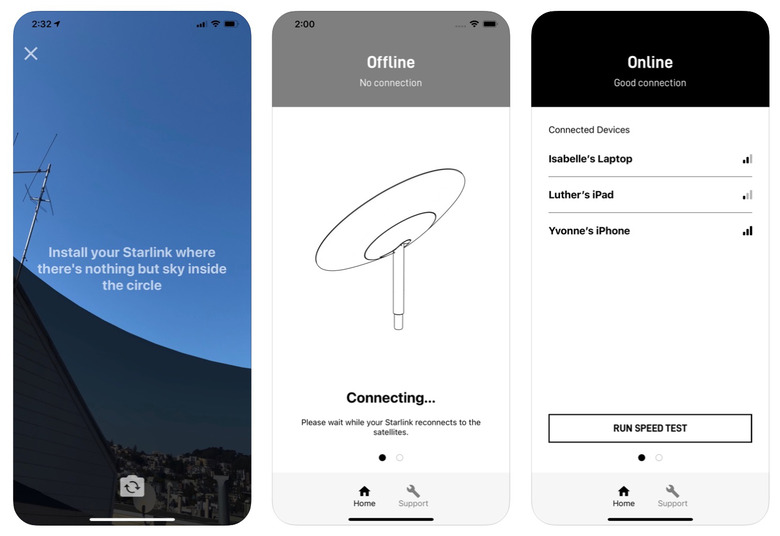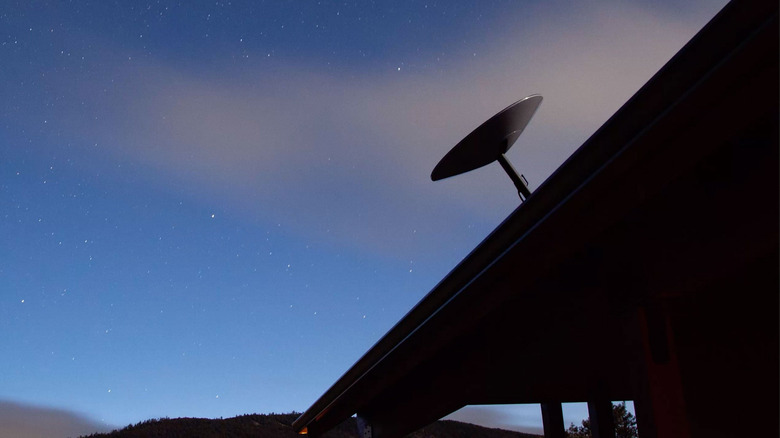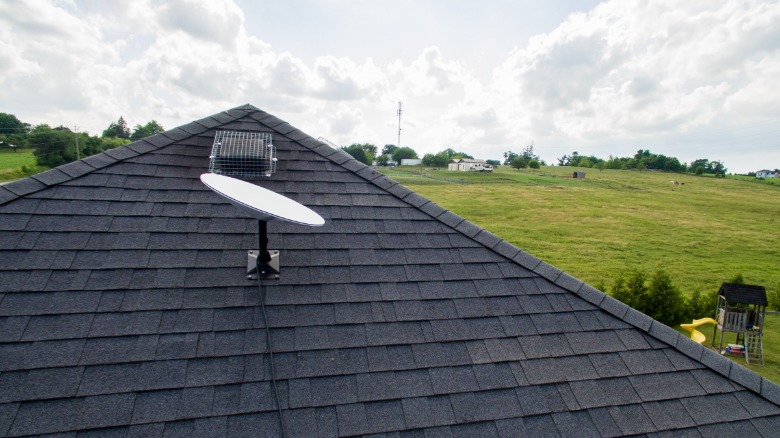This SpaceX Starlink Limit Has Killed My Satellite Internet Dream For Now
SpaceX successfully launched another 60 Starlink satellites into orbit, aiming to add to the coverage of its internet service, but while the constellation may be moving it turns out your dish can't. Like a lot of people, I've been hoping to score a space on the Starlink "Better Than Nothing Beta" which is giving some users early access to the company's internet network, but it turns out there's some fine print that might limit how you hoped to use it.
Rather than wired cable or fiber optic links, internet service through a phone line, or terrestrial wireless like 4G and 5G, Starlink looks to space for its connection. SpaceX plans a huge number of orbiting satellites – known as a constellation – which would effectively blanket the planet in coverage.
On the ground, users have a Starlink kit that includes an auto-configuring dish which communicates with the satellites overhead. A tethered router then shares that connection with your WiFi devices. It's designed to be easy to set up: you just check in the Starlink app to make sure you're positioning the dish with line-of-sight to the constellation overhead, and then the dish itself automatically adjusts to keep that focus.

Right now, the beta program is making some very cautious promises. Users can expect 50-150 Mb/s rates at this early stage, and 20-40 ms latency. "There will also be brief periods of no connectivity at all," Starlink warns, since the satellite constellation isn't complete yet. The goal, the company says, is 16-19 ms of latency by summer this year, as well as an increase in coverage and speed.
What you might not have realized – and what I didn't until I checked the beta FAQs again – was that, though the Starlink kit is designed to auto-configure, it's not meant to be moved. "Starlink satellites are scheduled to send internet down to all users within a designated area on the ground," SpaceX explains. "This designated area is referred to as a cell."
That's a problem if you planned to move the dish outside of that area. "Your Starlink is assigned to a single cell," Starlink says. "If you move your Starlink outside of its assigned cell, a satellite will not be scheduled to serve your Starlink and you will not receive internet. This is constrained by geometry and is not arbitrary geofencing."
Clearly, for many users, the idea of being able to bypass the sluggish DSL or cable connections they currently have to choose from and go for a potentially much-faster satellite connection is still mighty appealing. It was enough to help SpaceX score a multi-million contract to provide rural connections in the US, too. This cell constraint won't impact you if you just want to mount the Starlink dish on your roof, though if you plan to move then SpaceX may require you to return the kit and end service.
It's more of an issue if, like me, you had plans to take Starlink on the move. Personally, I liked the idea of being able to take the internet system to trade shows and events, bypassing slow hotel networks or overloaded conference center WiFi with a much faster alternative. 50-150 MB/s may pale in comparison to fiber, but it's a whole lot better than the skinny pipe that most hotels offer (and typically charge plenty for).
Others, I know, had ambitions of taking Starlink with them as digital nomads. The idea is appealing: mount the dish on your RV or truck, and head off into the wilderness without having to worry about roaming beyond cellular networks. Early users even showed how that could work, taking test kits out into a forest and showing what sort of speeds you could expect.
It's unclear just how large each individual Starlink cell is, and so how much scope there is to move around in it. Still, it doesn't sound like my dream – or that of others – to pack up a Starlink kit and go mobile around the country is feasible.
Update: According to the Starlink team, the ability to move your system to a new location is coming eventually, though as you might've guessed it'll depend in part on having more satellites in the sky. There's no word on just how many satellites that actually means, nor what sort of timeline might be involved to get there, and there'll apparently be new hardware and software required too. It's not entirely clear at this stage whether you'll be able to simply roam around, digital nomad style, and have the dish keep you connected regardless, or if this is more about registering new fixed addresses whenever you move house, but it still seems like good news for the longer-term prospects of Starlink. [Thanks Michael!]

